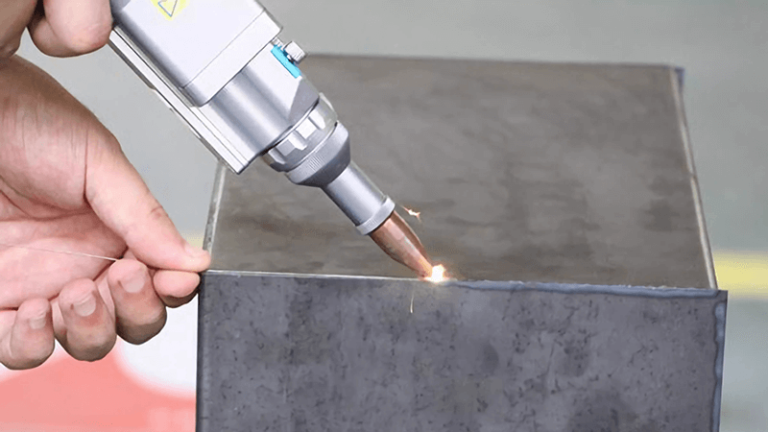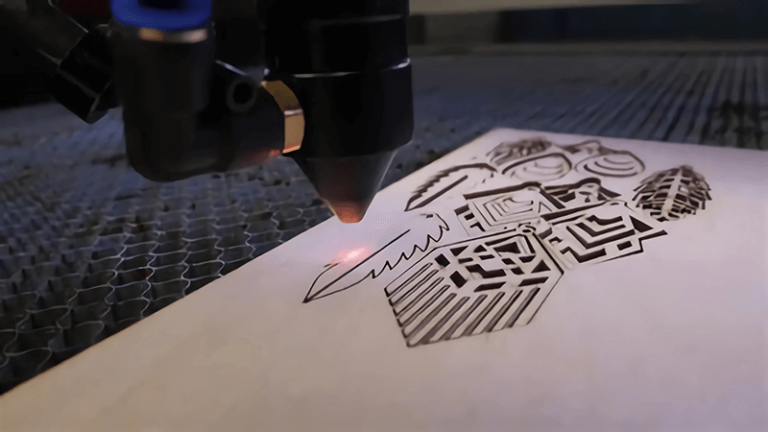Rust. It's the silent enemy of metal. It creeps up slowly, but before you know it, it has wreaked havoc. If you've ever battled rust, you know how frustrating it can be. But what if I told you there's a more efficient way to remove it? Enter laser machines. These high-tech tools are revolutionizing rust removal. Let's dive into how they work and why you should consider them for your rust removal needs.
Laser rust removal is an innovative method that uses laser technology to clean metal surfaces efficiently and precisely. Unlike traditional methods, laser rust removal is non-abrasive, environmentally friendly, and cost-effective in the long run source.
Curious? You should be. Laser rust removal might just be the best-kept secret in metal maintenance.
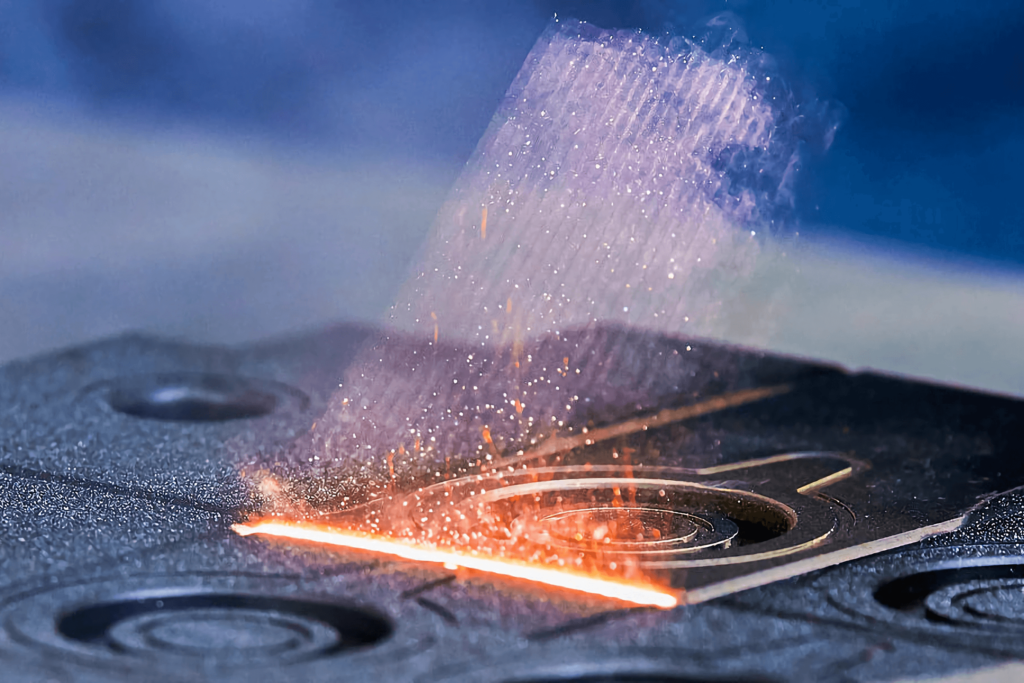
What Is Laser Rust Removal?
Laser rust removal, or laser cleaning, utilizes concentrated light energy to evaporate rust from metal surfaces. This process is precise, targeting only the rust without damaging the underlying metal. It's like using a scalpel instead of a hammer. Traditional methods, like sandblasting or chemical treatments, can be harsh and damaging. Laser cleaning, on the other hand, is a game-changer.
Traditional methods involve scrubbing, chemicals, or abrasives, which can be labor-intensive and harmful to the environment. Laser cleaning is a modern alternative that is both efficient and eco-friendly source.
Intrigued? Keep reading to see why lasers are the future of rust removal.
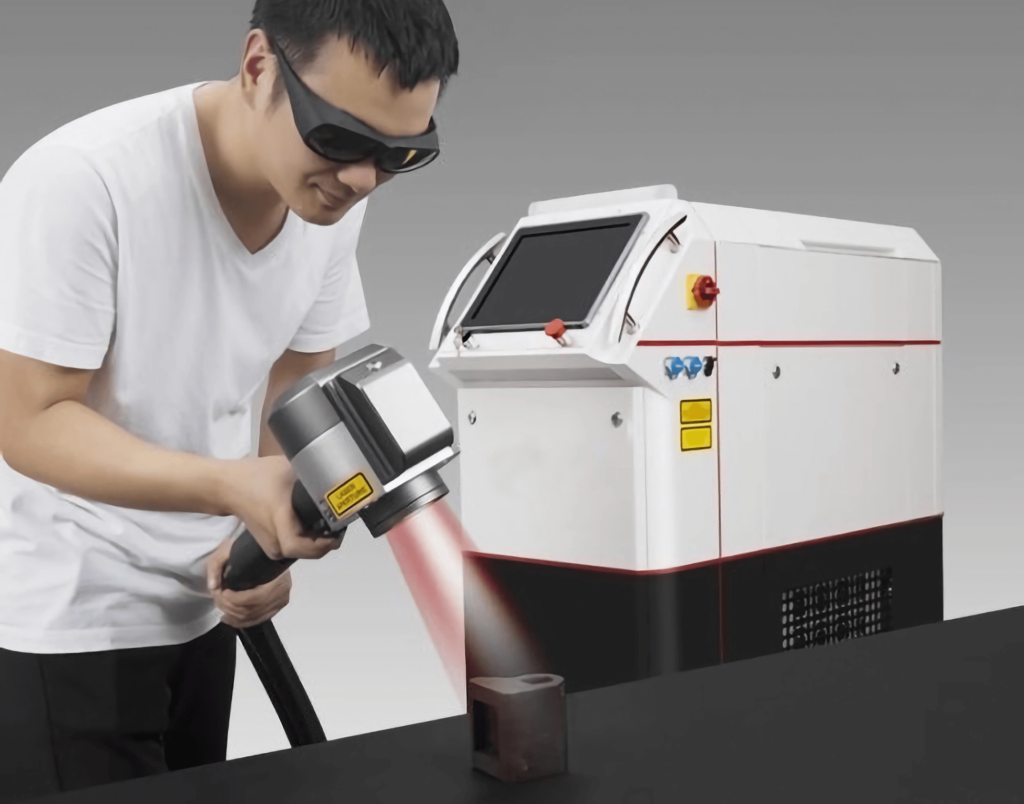
Why Choose Laser for Rust Removal?
Why lasers, you ask? The benefits are numerous. First, there's efficiency. Laser rust removal is fast. It can clean large surfaces quickly and with minimal labor. Precision is another big advantage. Lasers target only the rust, preserving the integrity of the metal beneath. Plus, it's environmentally friendly. No chemicals or abrasives means no harmful residues.
Laser technology offers unmatched precision and efficiency, making it ideal for delicate or high-value metals. Additionally, it reduces waste and environmental impact, aligning with green initiatives source.
How Does Laser Rust Removal Work?
Laser rust removal works by directing a laser beam at the rusty surface. The laser energy is absorbed by the rust, causing it to evaporate. There are different types of lasers used, including pulsed and continuous wave lasers. Each type has its own advantages, depending on the application.
Pulsed lasers are typically used for precise cleaning tasks, where control and minimal thermal impact are critical. Continuous wave lasers are better suited for larger, more uniform surfaces source.
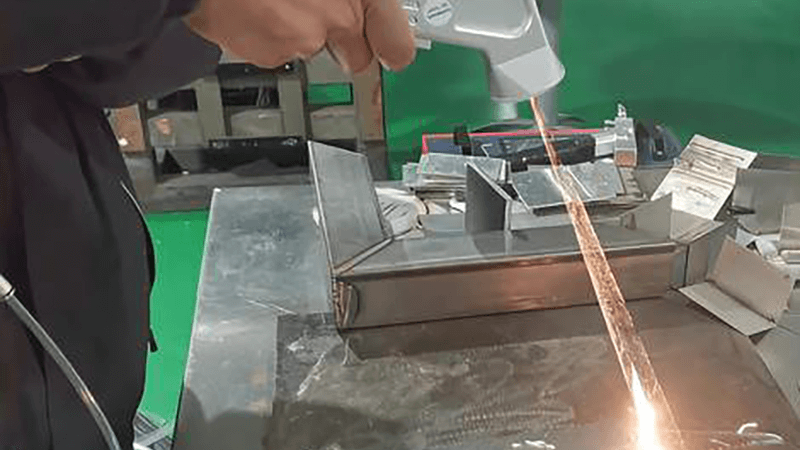
Where Can You Apply Laser Rust Removal?
Laser rust removal isn't just for one type of industry. It's versatile. You’ll find it in automotive restoration, manufacturing, and even art conservation. Think about car parts, machinery, and metal sculptures. Anywhere there's metal, there's potential for rust. And where there's rust, there's a need for laser cleaning.
Industries like automotive, aerospace, and manufacturing benefit from the precision and efficiency of laser rust removal. Even historical preservationists use it to clean and restore metal artifacts source.
Need examples? Here are a few to get you thinking. Success stories about using our laser cleaning machines for rust removal in different industries.
Success Stories: Laser Cleaning Machines for Rust Removal
1>. Car Repairing with 300W Pulsed Laser Cleaning Machine
Using a 300W pulsed laser cleaning machine can greatly enhance car repair efficiency. One client used this machine to restore cars with scratches and paint peeling. The laser cleaning process exposed the original, rust-free metal, prepping the cars for repainting. This method not only sped up the project but also delivered remarkable results, leaving the cars looking brand new.
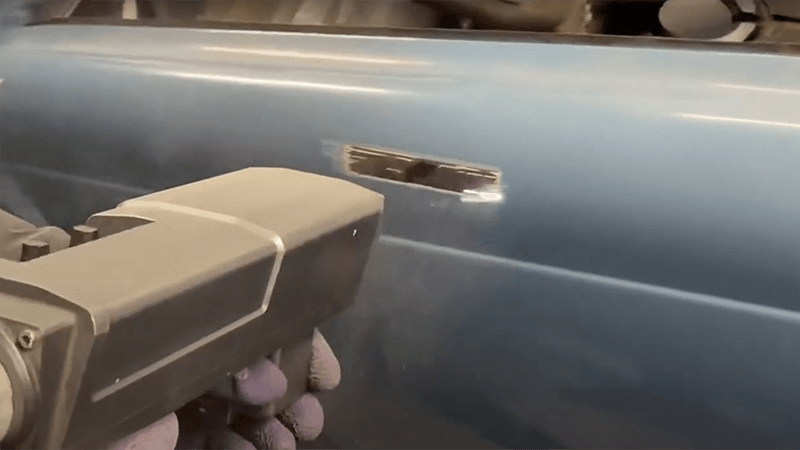
2>. Ship Maintenance with 500W Fiber Laser Cleaning Machine
A ship maintenance company utilized a 500W fiber laser cleaning machine to remove rust from the hulls of their fleet. The laser cleaning process was not only faster but also environmentally friendly compared to traditional sandblasting methods. The company significantly reduced downtime, allowing ships to return to service quicker and in better condition, ultimately saving on maintenance costs.
3>. Industrial Equipment Restoration with 200W Pulsed Laser Cleaning Machine
An industrial manufacturing plant faced issues with rust on their machinery, leading to frequent breakdowns. By implementing a 200W pulsed laser cleaning machine, they efficiently removed rust from various components without causing any damage to the equipment. This solution extended the lifespan of their machinery, reduced maintenance costs, and improved overall productivity.
4>. Heritage Conservation with 100W Pulsed Laser Cleaning Machine
A heritage conservation team used a 100W pulsed laser cleaning machine to remove rust from historic metal structures. The precision of the laser allowed for delicate cleaning without damaging the intricate details of the artifacts. The project preserved the historical integrity of the structures, ensuring they remain intact for future generations to appreciate.
5>. Pipeline Maintenance with 300W Pulsed Laser Cleaning Machine
A pipeline maintenance firm adopted a 400W pulsed laser cleaning machine to address rust and corrosion issues in their infrastructure. The laser cleaning technique proved to be highly effective in removing rust without causing any damage to the pipelines. This approach not only prolonged the lifespan of the pipelines but also minimized environmental impact compared to chemical cleaning methods.
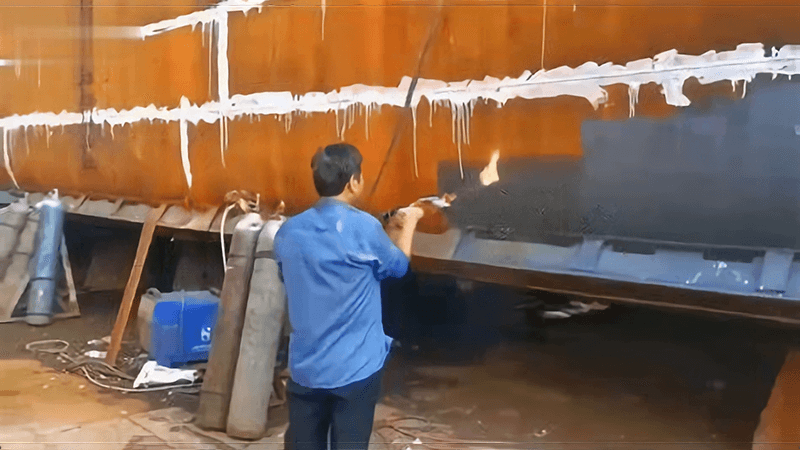
What Are the Cost Implications?
Cost is always a factor. While the initial investment in a laser machine might seem high, consider the long-term savings. Laser rust removal reduces labor costs, minimizes waste disposal fees, and increases the lifespan of metal components. It's a smart investment.
Investing in laser technology can lead to significant cost savings over time. Reduced maintenance, fewer replacements, and lower waste management costs all contribute to a positive ROI source.
Let’s talk numbers and ROI.
2024 Best Cabinet-type Pulsed Laser Cleaning Machine For Sale
- Power: 100w, 200w, 300w 500w, 1000w
- Cost: Approximately $6,000 - $34,450.
- Application: Ideal for automotive repairs, ship maintenance, and industrial equipment cleaning.
- Features: Pulsed laser source, non-contact cleaning, precise, and environmentally friendly.
- Selling Points: Portable, efficient rust removal and paint stripping.
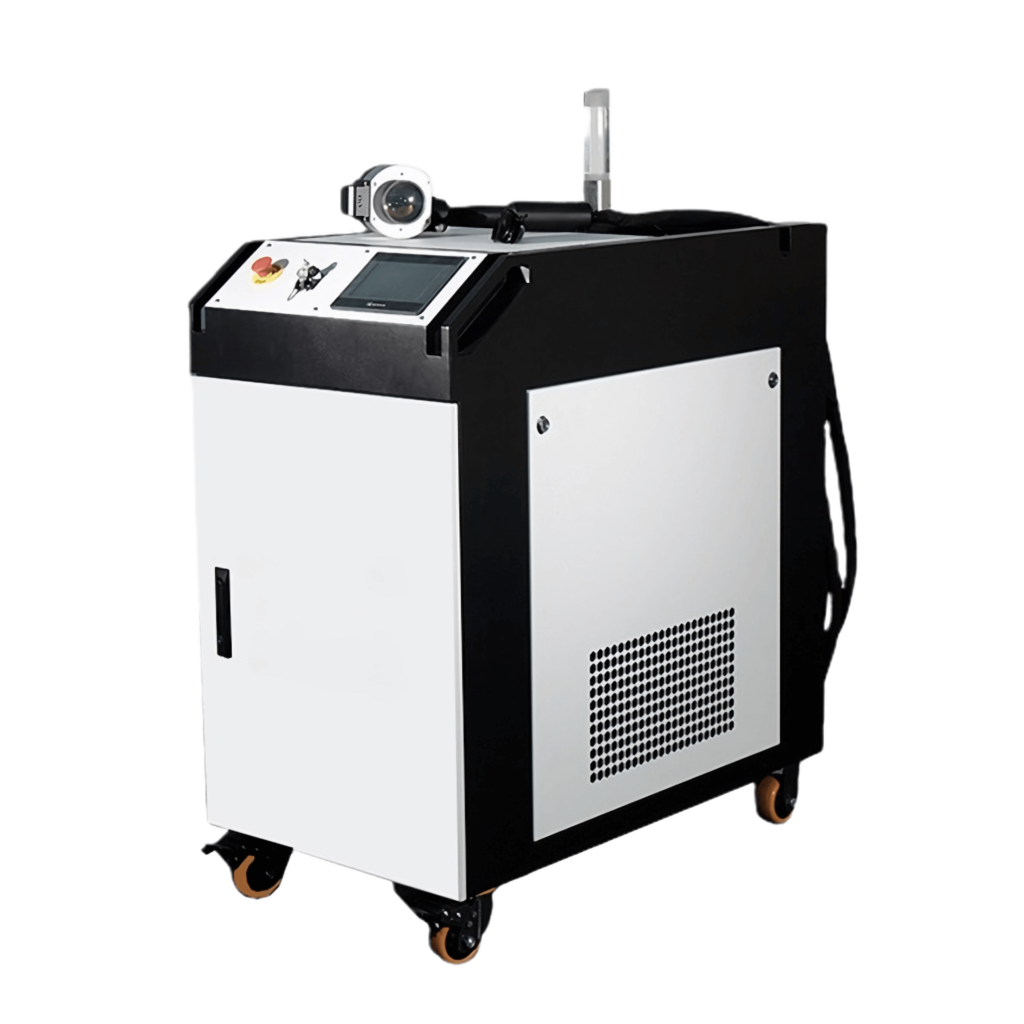
2024 Best Luggage-Type Pulsed Laser Cleaning Machine
- Power:Available in 100W, 200W, 300W, 500W, and 1000W models.
- Cost:Approximately $6,000 - $13,750.
- Application: Perfect for automotive repairs, ship maintenance, industrial equipment cleaning, and more.
- Features: Designed like luggage for easy transport and use on-site.No damage to the underlying material. Removing contaminants without affecting surrounding areas. Easy to move and operate in various locations.
- Selling Points: Quickly removes rust, paint, and coatings. Reduces downtime and increases productivity.
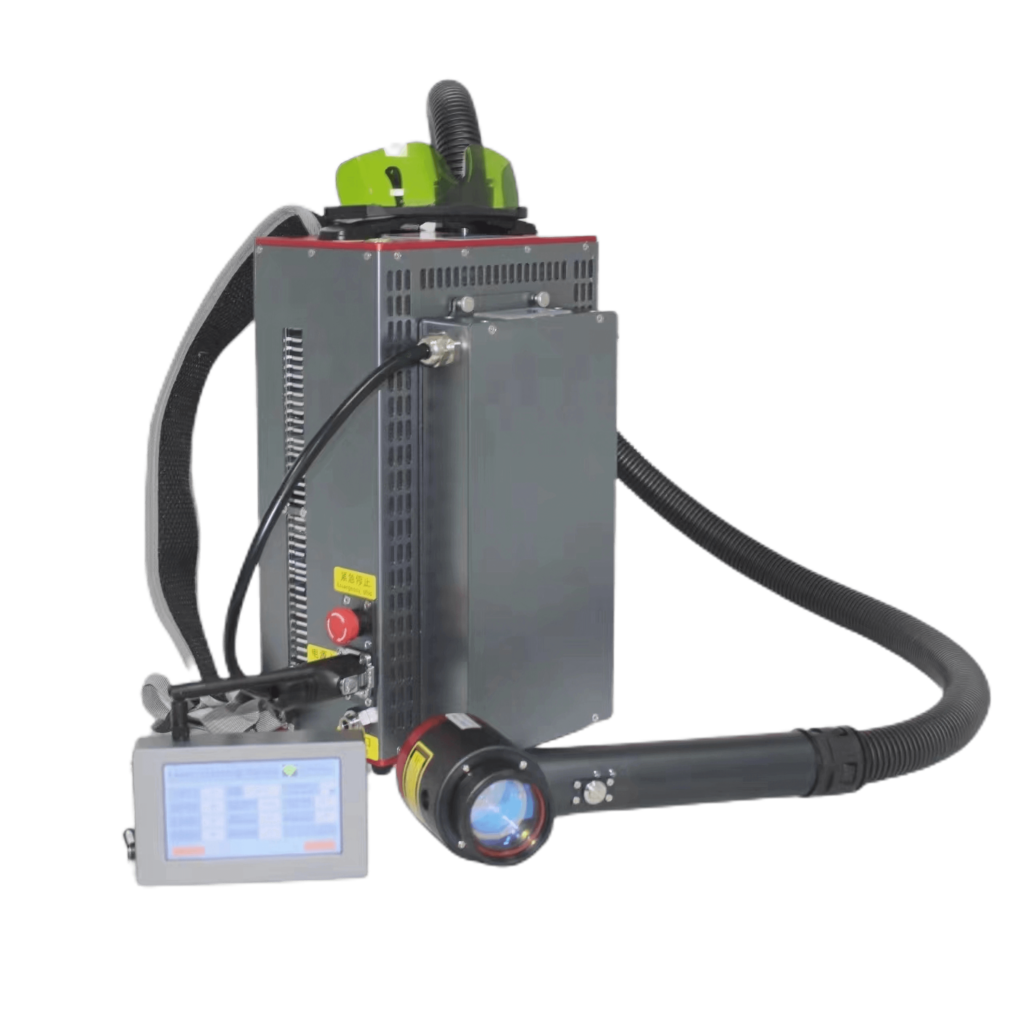
2024 Best Cabinet-Type CW Laser Cleaning Machine For Sale
Power: Available in 1500W, 2000W, 3000W.
Cost: Approximately $3,000 to $10,000.
Application: Ideal for large-scale industrial cleaning tasks, including pipeline maintenance, heavy machinery restoration.
Features:Continuous Wave laser for high-speed, deep cleaning. Ensures safety and containment of the cleaning process.
Selling Points: Handles large and complex cleaning tasks effectively. Long-term savings on maintenance and consumables.
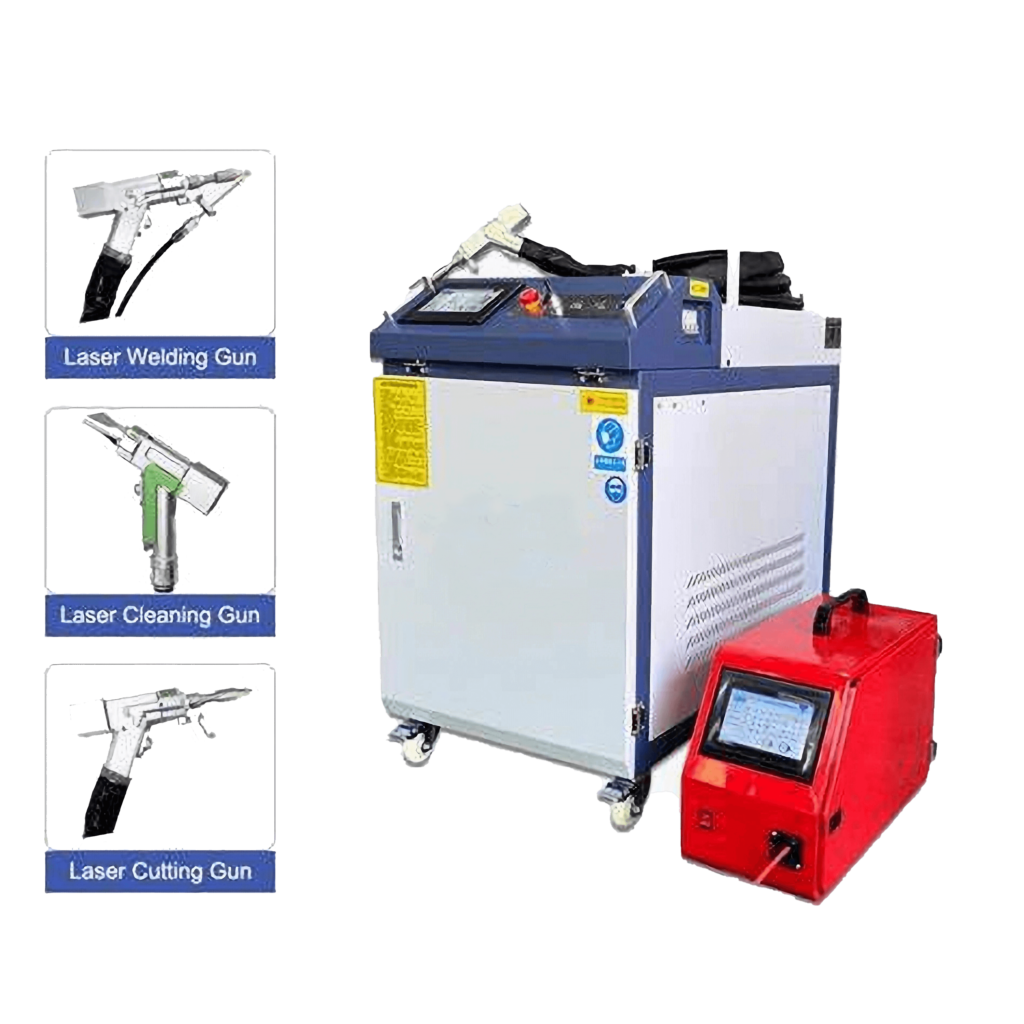
Ensuring Safety During Laser Rust Removal
Safety first, folks. Laser rust removal is safe when proper precautions are taken. Operators need training to handle the equipment. Safety gear like goggles and gloves are essential. But don't worry; once you get the hang of it, it's smooth sailing.
Proper training and safety measures are critical. Ensure your team is equipped with the necessary protective gear and understands the operational protocols to maintain a safe working environment source.
Ready to gear up? Here’s what you need to know.
Future of Laser Rust Removal Technology
What’s next for laser rust removal? The technology is continually evolving. New developments are making lasers more powerful, efficient, and affordable. The future looks bright. Innovations could open up new applications and markets, making laser rust removal even more accessible.
Emerging technologies promise more efficient and cost-effective solutions. As laser technology advances, expect to see broader adoption across various industries source.
Looking ahead, the possibilities are endless.
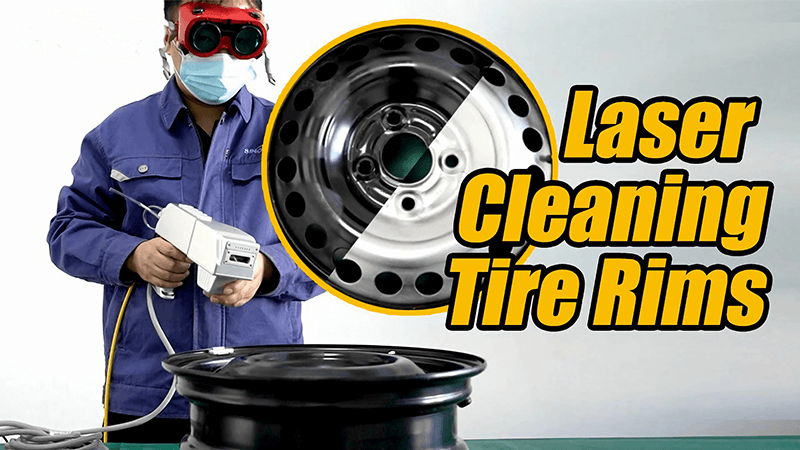
FAQs About Laser Rust Removal
1>. Is laser rust removal safe for all materials?
Yes, laser rust removal is generally safe for most materials. However, it's always best to test on a small area first to ensure there are no adverse effects.
2>. Can laser rust removal be used on painted surfaces?
Laser rust removal can remove paint as well as rust. It's an effective method for surface preparation before repainting.
3>. How does laser rust removal work?
Laser rust removal works by emitting a high-energy laser beam that vaporizes the rust or oxide layer on the surface. The laser energy is absorbed by the rust and converted into heat, which removes the rust without damaging the underlying material.
4>. Is laser rust removal environmentally friendly?
Yes, laser rust removal is an environmentally friendly method. It does not use chemicals or abrasive materials, reducing waste and contamination. The process is clean and often requires minimal protective measures.
5>. What are the advantages of laser rust removal over traditional methods?
Laser rust removal offers several advantages over traditional methods, including:
- Precision: It targets only the rust without affecting the base material.
- Efficiency: The process is fast and requires minimal setup.
- No Chemicals: Eliminates the need for hazardous chemicals.
- Low Maintenance: Minimal wear and tear on equipment.
6>. Can laser rust removal be used on delicate surfaces?
Yes, laser rust removal can be adjusted for delicate surfaces. The laser parameters can be fine-tuned to ensure that the underlying material is not damaged, making it suitable for delicate or intricate parts.
7>. What materials are most compatible with laser rust removal?
Laser rust removal is compatible with a wide range of materials, including metals like steel, aluminum, and titanium. It's also effective on non-metallic surfaces, such as certain plastics and ceramics, depending on the application.
8>. How does laser rust removal compare to sandblasting?
Laser rust removal is often preferred over sandblasting for several reasons:
- Precision: Laser rust removal is more precise and less abrasive.
- Cleanliness: It produces less waste and no dust, making it safer and cleaner.
- Versatility: It can be used on a variety of materials and surface conditions.
9>. Is laser rust removal cost-effective?
Yes, laser rust removal is cost-effective in the long run. While the initial investment in laser equipment might be higher, the reduced labor costs, minimal consumables, and increased efficiency lead to significant savings over time.
10>. What safety measures should be taken during laser rust removal?
Safety measures during laser rust removal include wearing protective eyewear, using appropriate ventilation to remove any fumes, and ensuring that the laser is operated by trained personnel. Additionally, following manufacturer guidelines and safety standards is crucial for safe operation.
Conclusion
Rust doesn't stand a chance against laser technology. With its efficiency, precision, and environmental benefits, laser rust removal is the way to go. Whether you're in automotive, manufacturing, or restoration, it's time to consider this innovative solution. Ready to leave rust in the dust? Let's embrace the future with laser rust removal.
And remember, rust never sleeps. But with the right tools, neither do we.
So how to choose the right laser cleaning machine for your needs? Let us more to the other chapter: How to Choose the Right Laser Cleaning Machine: Pulsed Laser Cleaning vs. CW Laser Cleaning.
Reference:
1>. "Laser Cleaning Machine", from STULE CNC.
2>. "What is Laser Rust Removal & How Does It Work?", from Keyence


